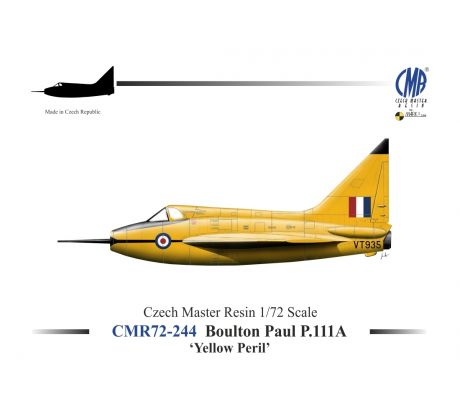Boulton Paul P.111A ‘Yellow Perilʼ

Boulton Paul P.111A ‘Yellow Perilʼ
This full resin kit contains 32 parts, 9 hardened black resin parts (undercarriage legs), a photo-etched fret, vacu canopy (a spare set is included for modeller’s convenience) and a comprehensive decal sheet
Colour scheme included in the kit:
1) Boulton Paul P.111A, VT935, Aeroplane and Armament Experimental Establishment (A&AEE), Boscombe Down Air Base, Wiltshire, U.K., 1953
| Ref. No.: | CMR72-244 |
| Availability: | IN STOCK |
Boulton Paul P.111A ‘Yellow Perilʼ
The Boulton Paul P.111 was a British experimental aircraft designed by Boulton Paul in the late 1940s to Air Ministry specification E.27/46. It was one of the first aircraft constructed to explore the characteristics of the tailless delta wing configuration.
It flew for the first time in October 1950 and after various modifications to improve its flight characteristics it was re-designated the P.111A. In this form it flew in July 1953 and was extensively used by the Royal Aircraft Establishment. Its final flight was conducted in mid-1958 and then it was moved to the Cranfield College of Aeronautics and used as a training airframe.
The P.111A was a single-seat research aeroplane of an all-metal construction and stressed-skin covering. A stubby fuselage, with a flattened oval nose intake, housed the pilot’s cockpit fitted with a Martin-Baker ejection seat, and the RR Nene 3 turbojet. Four fuselage-mounted airbrakes were provided and a brake parachute was housed in the rear port fuselage. The thin delta wing, swept at an angle of 45°, featured removable wing tips that could be swapped to produce different wing shapes. The tricycle retractable landing gear had a wide track and a tall nosewheel leg. The aircraft was fitted with one of the first fully-powered control systems.






